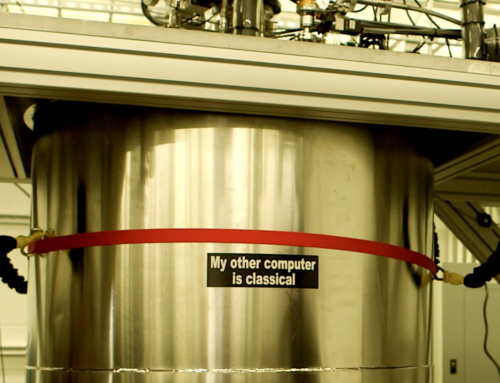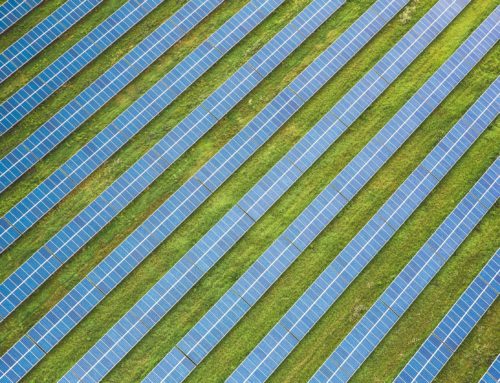Image via United Nations University
Part 2 of 3: Energy
Gabriella Skoff
Part two of this series explores how, in the field of renewable energy, quantum technology has been quietly pushing ahead to improve the efficiency and cost of green energy. Quantum qualities hold vast promise for commercial applications in solar power and other cutting-edge, sustainable energy technology. These emerging technologies could hold the key to shifting renewable energy into the mainstream, finally making it cheaper and more efficient than traditional energy sources for the general population.
Quantum dots, used to convert sunlight to energy with increasing efficiency, are quickly becoming the new material of choice for solar panels. Due to their nanoscale size, quantum dot sensitized solar cells (QDSSC) have unique properties which allow them to convert more energy from the sun than traditional materials. These third-generation quantum solar panels have reduced weight, improved flexibility and, importantly, are cheaper to make than previous generations of solar technology. This application of quantum technology could be a huge breakthrough in the solar market, enabling it to be more competitive, both in terms of cost and efficacy, than traditional energy sources.
While this technology is still in the pre-commercial stages of development, quantum photovoltaic systems are expected to make a big impact on the renewable energy sector, promising to reduce global reliance on fossil fuels. Before this can occur, however, there is a significant amount of troubleshooting still to be done. As with most nano-products, the impacts of QDSSC on the human and natural environments are still largely unknown and potentially toxic. Another issue is the durability of QDSSC across the weather spectrum. Unlike issues of negative human and environmental impact, which receives very little research funding or government interest, research into the all-weather question is moving along swiftly in answer to commercial needs.
While quantum technology is applied for the purpose of augmenting the amount of energy that can be harvested from solar radiation, it is also being explored as a method to capture what is referred to as “wasted energy”. Wasted energy is the name given to infrared energy produced by the sun that is not absorbed by solar panels or through photosynthesis into useable energy. This unused energy does not disappear but spreads out and is absorbed into the earth’s surface, making it incredibly difficult to collect and use.
By employing a method called quantum tunnelling, scientists have created a proof of concept antenna that can detect this wasted energy in the form of high-frequency electromagnetic waves and transform it into usable energy. Unlike solar panels, this quantum-enabled device could operate 24-hours a day, under any weather conditions. This application of quantum technology presents an entirely new method of energy transfer that would be completely green and again has the potential to revolutionize the renewable energy sector.
While the promise is great, this technology is in its infancy, with many technical problems still to surmount. Still, quantum technology opens many doors into the renewable energy space for technology that holds great potential for the coming years.
Click here for the final instalment in our Environmental Security series.







[…] to investing in renewable energy. Quantum research outside of communication and computing presents promising potential for renewables. However, quantum applications in this space require an increased level of attention […]